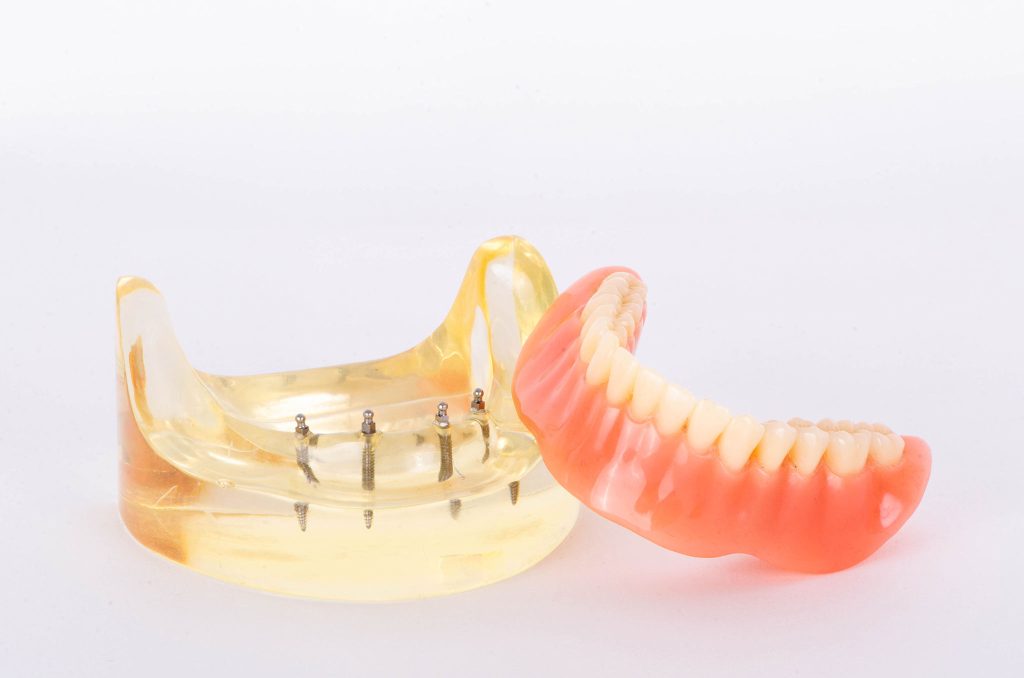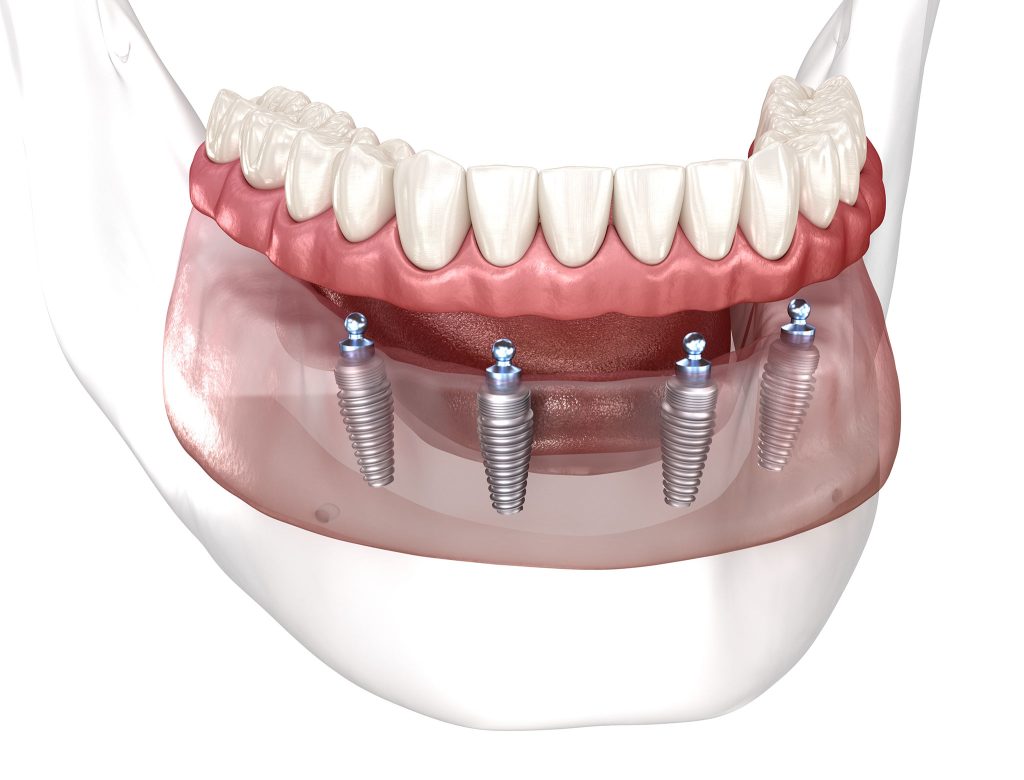What is an implant retained bridge?
An implant-retained bridge is a type of dental prosthesis that uses dental implants as anchors to support a bridge for multiple missing teeth. Unlike traditional bridges that rely on adjacent teeth for support, an implant-retained bridge is fixed securely to implants surgically placed in the jawbone.
Implant-retained bridges are commonly recommended for patients with multiple missing teeth, especially when the adjacent teeth are not suitable for supporting a traditional bridge. They are a viable solution for both the upper and lower jaws and can significantly improve the quality of life for patients by restoring function and aesthetics.
Overall, implant-retained bridges represent a highly effective and reliable option for replacing multiple missing teeth, combining the benefits of dental implants with the aesthetics of a bridge.



Advantages
Dental implants offer numerous advantages over other tooth replacement options. Here are some key benefits:
| Durability: Dental implants are designed to be a long-lasting solution, often lasting a lifetime with proper care. The materials used, such as titanium, are biocompatible and resistant to decay. |
| Natural Appearance: Implants closely resemble natural teeth in both function and appearance, helping to restore a patient’s smile and confidence. Custom crowns can be made to match the colour and shape of existing teeth. |
| Improved Functionality: Unlike traditional dentures, which can slip or shift, dental implants provide a stable base that allows for normal chewing, speaking, and smiling. Patients can enjoy a wider variety of foods without discomfort. |
| Bone Preservation: Implants stimulate the jawbone, preventing the bone loss that often occurs after tooth loss. This helps maintain facial structure and can prevent the sunken appearance that can result from bone deterioration. |
| Enhanced Oral Health: Dental implants do not rely on neighbouring teeth for support, unlike bridges. This helps preserve the integrity of surrounding teeth and promotes better overall oral health. |
| No Special Maintenance: While traditional dentures require specific cleaning methods and adhesives, dental implants can be cared for like natural teeth, with regular brushing, flossing, and routine dental check-ups. |
| Increased Comfort: Implants eliminate the discomfort associated with removable dentures, such as sore spots and irritation. Once healed, they feel like a natural part of the mouth. |
| Improved Quality of Life: The confidence and comfort provided by dental implants can significantly enhance a person’s quality of life. Many patients report improved self-esteem and social interactions after receiving implants. |
| Convenience: Unlike dentures that need to be removed for cleaning, dental implants are permanently placed and do not require special cleaning routines, making them a convenient option for daily life. |
Disadvantages
While dental implants offer numerous advantages, there are also some potential disadvantages and considerations to keep in mind:
| Cost: Dental implants can be more expensive than other tooth replacement options, such as dentures or bridges. The overall cost may include the implant, abutment, crown, and any necessary surgical procedures, which can add up. |
| Surgical Procedure: The placement of dental implants requires minor surgery, which may involve some discomfort and a recovery period. Some patients may be apprehensive about undergoing surgical procedures. |
| Healing Time: After the implant is placed, a healing period of several months is typically necessary for osseointegration (the process of the implant fusing with the jawbone) to occur before the final restoration can be attached. This extended timeline can be a drawback for some patients. |
| Bone Density Requirements: Not all patients have sufficient jawbone density to support an implant. In cases of bone loss, additional procedures like bone grafting may be required, which can increase the treatment time and cost. |
| Potential for Complications: Although dental implant surgery has a high success rate, complications can occur, such as infection, implant failure, or nerve damage. Factors like smoking, poor oral hygiene, and certain medical conditions can increase the risk of complications. |
| Maintenance and Care: While implants don’t require special cleaning routines, they still need regular dental care and maintenance. Patients must commit to good oral hygiene practices to prevent infections around the implant (peri-implantitis). |
| Not Suitable for Everyone: Certain medical conditions, such as uncontrolled diabetes, autoimmune diseases, or extensive bone loss, may affect the suitability for dental implants. A thorough evaluation is necessary to determine candidacy. |
| Changes in Bite: If an implant is not placed properly, or if there are changes in the jawbone or surrounding teeth over time, it may affect the bite or lead to discomfort. Adjustments may be needed to ensure proper alignment. |
The Implant Retained Bridge Process
The process of getting an implant typically involves several stages.
Initial Consultation & Evaluation: The dentist assesses the patient’s oral health, bone density, and medical history to determine if they’re a good candidate for implants.
Imaging: X-rays, CT scans, or 3D imaging are used to evaluate the jawbone structure and plan the ideal implant placement.
Treatment Planning: A personalized treatment plan is created, which includes the number and location of implants required, as well as any additional procedures (e.g., bone grafting).
Anaesthesia: Local anaesthesia, IV sedation or general anaesthetic is administered to ensure the patient’s comfort during surgery.
Placing the Implants: The dentist surgically places titanium implants into the jawbone at the predetermined locations. These implants act as artificial tooth roots and provide a stable foundation for a tooth crown to be placed on top.
Healing and Osseointegration: After implant placement, a healing period of several months (typically 3–6 months) is necessary. During this time, osseointegration occurs, where the bone fuses with the implants, creating a strong bond.
Abutment Placement: Once osseointegration is complete, a second minor surgical procedure may be performed to place the abutment. The abutment is attached to the implant and extends above the gum line, serving as a connection for the final restoration. The gums are then allowed to heal around the abutment.
Final Restoration: After the gums have healed, impressions or digital scan of the mouth are taken to create the custom restoration (crown)that will be placed on the abutment. This restoration is designed to match the colour and shape of the surrounding teeth.
Placement of Restoration: Once the restoration is ready, it is securely attached to the abutment. The dental professional will ensure proper fit, function, and aesthetics before finalizing the placement.
Follow Up
Regular follow-ups are scheduled to monitor healing and ensure that the implants are functioning well. Adjustments may be made to maintain comfort and stability as the mouth adjusts. Implants need to be cleaned 6-12 monthly just like natural teeth. The success of implants depends on at home maintenance and regular dental visits
*** Process from start to finish can take approx. 3-6 months. ***
